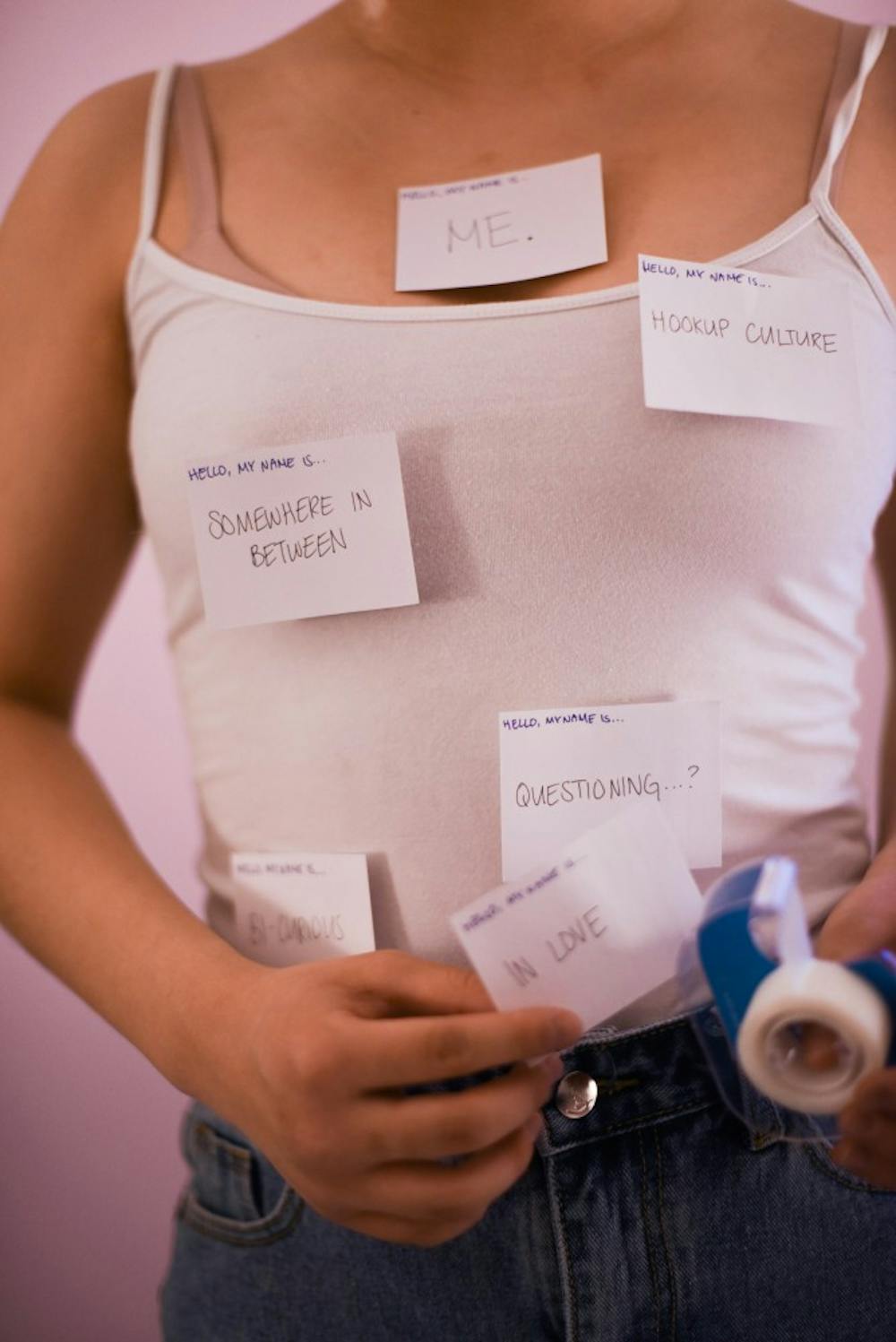Hook-up Apps At John Hopkins
Nov 19, 2021 Trending African-American and black celebrities news, gossips and more. Get the scoop on your favorite Black celebrities from BET. I want to write Saint John Hook Up Apps a story about our meeting with Travis, it Saint John Hook Up Apps was amazing time together. We talked about everything and I enjoyed every minute in his company. He is kind, funny person, we have a lot in common and I am sure it Saint John Hook Up Apps. The researchers at John Hopkins are using the sensors in the Apple Watch plus and app called EpiWatch to help epilepsy patients monitor seizures and hop. They only went mainstream a few years ago, but drones are already making a big splash on the market. In a May 2016 article, Fortune magazine reported that drone sales tripled to $200 million in the. Local Single Hook Up Near Castro Valley Women - Girls for Sex - Dating Someone Hook Up Near Castro Valley Near Looking Men. Use this google groups for “date now”, if you searching for find girls near me then meet a million girls nearby you who are seeking men for love, romance, sex, casual hook up, one night stands!
- Hook-up Apps At John Hopkins University
- Johns Hopkins Cloud Apps
- John Hopkins Medical App
- Hook-up Apps At John Hopkins College
The COVID-19 pandemic has brought experimentation in all different types of remote care, and that includes neuroscience. Physical therapists are exploring the use of tele-neurorehabilitation and gamification to help stroke victims recover.
John Krakauer, M.D., professor of neurology, neuroscience, and physical medicine and rehabilitation at the Johns Hopkins University School of Medicine, describes tele-neurorehabilitation as “trying to use technology to beam yourself into the patient’s home and give them that same kind of care without being present.”

“Usually that’s going to require a mixture of a video hookup so that you can chat and watch what the patient is doing, and then varying degrees of gamification and instrumentation,” said Krakauer, who also serves as chief medical and scientific adviser to MindMaze, an advanced neuroscience and digital therapeutics company.
People recovering from strokes need immediate guidance from physical therapists, and they are continuing this work remotely during the pandemic. Physical therapists direct patients on how to move while following along via video, such as directing patients to lift their arm up higher or move their foot in a certain way in repetition.
“We know that immediate feedback about task performance is important, so we need people practicing at high intensity,” said David Putrino, Ph.D., director of rehabilitation innovation for the Mount Sinai Health System, which uses MindMaze’s MindMotion Go platform to track body movements. “We need someone watching closely saying that was a good movement and that was a not-so-good movement.”
With hospitals in crisis from the influx of COVID patients, telerehabilitation fills a need to replace outpatient visits.
“For many hospitals right now, it’s simply not safe to attend outpatient visits,” Putrino said. “It’s not advised. The hospitals are in crisis and managing an outpatient caseload is just not really something that is an important priority in terms of global safety for a lot of hospitals right now.”
Following surgery, stroke victims would usually have a period of inpatient rehabilitation and then be discharged home. Following that, they required outpatient rehabilitation. Rather than patients simply accept their level of function without the outpatient therapy, providers are turning to tele-neurorehabilitation to continue their treatment.
“This is really important because at the discharge point, you’re still in your brain’s critical period where therapy has a lot more of an effect on your long-term trajectory,” Putrino said.
Physical therapists at Johns Hopkins Medicine clinic in Columbia, Maryland, are also using tele-neurorehabilitation to help patients address upper and lower dysfunction of extremities, according to Harrison Segal, a physical therapist at Johns Hopkins Hospital.
“At our Johns Hopkins Hospital clinic in Columbia, we are utilizing gamified rehabilitation as a platform for evaluating and treating patients with neurological dysfunction,” Segal said. “The use of gamified rehabilitation through tele-neurorehabilitation allows us to see our patients at a higher frequency, improve their compliance with their home exercise program, and overall increase their dosage of exercise.”

The University of California in San Francisco also plans to use the MindMaze technology as part of a clinical trial.
How tele-neurorehabilitation works
Hook-up Apps At John Hopkins University
MindMaze’s MindMotion Go uses optical motion-capture technology to track the body movements of patients, according to Putrino. MindMotion Go consists of two components: One part tracks whole body movement and the other system can track hand movement, Putrino explained.
“It can use computer vision to identify your body parts and track what your body parts are doing,” Putrino said.
In 26 games, MindMaze lets you perform exercises to move the full body, arms, legs and trunk as well as create balance.
“You can see a skeletal model of your body, which the therapist can also see,” Krakauer said. “You have a digitized version of your body on one side of the screen, you have the game on the screen, and you have the video link so the therapist can see the game and they can see you.”
The MindMotion Go system includes a dashboard that lets healthcare professionals monitor a patient’s motor recovery process. The therapists help patients increase stride length and balance as well as grasping and reaching, according to Putrino.
Physical therapists track whether a patient’s arm motion and walking are improving. They create exercises for patients to work on remotely, and gamification is important to recovery. In fact, the games promote neuroplasticity, the process by which the brain recovers after neurons get damaged by a stroke.
“What typically happens is the brain finds a way to rewire itself around the existing damage so that it can continue to provide you with a similar level of function as before your stroke,” Putrino said.
Growth opportunities for tele-neurorehabilitation
In the future, Putrino would like to see products such as MindMaze incorporate more sensors. He also sees a role for low-cost robotics in tele-neurorehabilitation. As the patient recovers it would gradually provide less assistance and allow the person to regain voluntary control over a limb, he said.

Going forward, the gamification elements of MindMaze can become more common for people that have experienced strokes and other neurological problems, according to Hayley Haaf, a physical therapist at Johns Hopkins Medicine in Lutherville, Maryland.
“It will become more of our standard of care, including the use of gamified rehabilitation, to allow for standardized evaluations and treatments as well as improved patient compliance,” Haaf said. “It will also help to improve access to care, therefore allowing a greater number of patients to receive treatment.”

Johns Hopkins Cloud Apps
In addition to stroke victims, tele-neurorehabilitation could help people with other types of conditions that restrict movement, according to Krakauer.
“My guess is that we’ll begin to see more and more use of technology to rehabilitate anyone with a neurological condition or some sort of immobility in general,” Krakauer said. “But in neurorehab, the big ones have been stroke and spinal cord injury, and to some degree, traumatic brain injury as well.”
Putrino says the exercises in platforms like MindMaze can benefit people with neurological conditions that require motor rehabilitation, such as multiple sclerosis, Parkinson’s disease, and spinal cord injury.
John Hopkins Medical App

Hook-up Apps At John Hopkins College
“I think there’s a lot of opportunity for the transference of the exercises to make sure that this can be helpful to as many patients as possible,” he said.